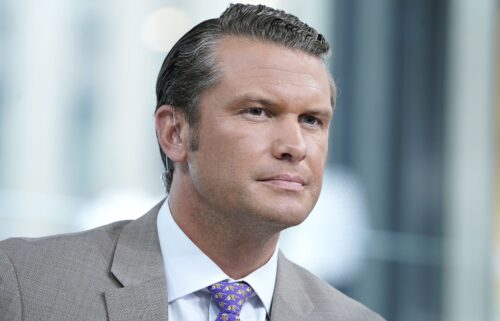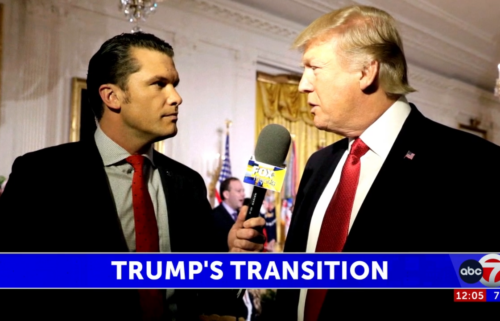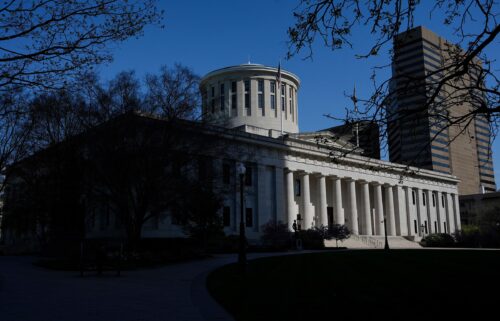Latinos will make their voices heard in Democratic race over the next four weeks

The Latino impact on the Democratic presidential race will be felt very soon.
Almost all of the states with a large Latino population will vote in just the next four weeks: Nevada on February 22 through Arizona, Florida and Illinois on March 17 — with Texas, California and Colorado in between on March 3, or Super Tuesday.
Cumulatively, the seven states with large Latino populations looming on the calendar will elect nearly half the Democratic delegates at stake in February and March.
This clustering will provide Latinos, now the nation’s largest minority group, their best opportunity to influence the choice of the 2020 Democratic nominee. And it represents a key test for Vermont Sen. Bernie Sanders, who has devoted enormous effort to organizing among Latinos after most of them backed Hillary Clinton during their 2016 contest for the nomination.
Visit CNN’s Election Center for full coverage of the 2020 race
This time, Latinos represent one of Sanders’ best opportunities to expand his coalition beyond the universe of younger and very liberal voters who powered his bid in 2016 and provided the core of his support in the Iowa and New Hampshire races that kicked off the 2020 race. Sanders is betting that not only will his performance improve among Latinos, but that Latinos will participate in the primaries in larger numbers than before to express their opposition to President Donald Trump.
“You are going to see much more intensity in the Latino community and I think that’s going to have a big benefit for him in a whole host of states,” says Jeff Weaver, a senior adviser to Sanders.
Both in 2008 and 2016, Latinos came together to provide a critical mass of support for Hillary Clinton. In each of her two presidential races, she carried almost exactly three-fifths of all Latino voters, according to cumulative analyses of all the exit polls conducted in each contest.
This time, no candidate appears poised to consolidate nearly as much support among Latinos.
“I think it’s a much tighter contest this year than in 2016,” says Matt Barreto, managing partner and co-founder of Latino Decisions, a Democratic polling firm that focuses on Latino voters. “Bernie Sanders still appears to be the most popular among Latinos, but he’s not a runaway.” Former Vice President Joe Biden has been attracting the second most support among Latinos, though former New York City Mayor Michael Bloomberg, fueled by a barrage of Spanish-language television advertising, is quickly establishing a beachhead too, Barreto believes.
So far, the campaigns and media alike have focused more attention on the group of Southeast states with large African-American populations that will also be voting over the same period. That lists starts on South Carolina on February 29 and runs into mid-March through states including Alabama, Arkansas, Georgia, Mississippi and North Carolina. Biden, in particular, is relying on those states to recover from his extremely weak showings in the first two contests.
The potential impact of Latinos, mostly in Southwest states, that will be voting at the same time has generated much less discussion.
“I really do think there is almost a total denial of the emerging Latino vote in the United States,” says former Illinois Democratic Rep. Luis Gutierrez, who played a leading role on immigration issues until retiring from the House in 2018. “People say statistically they say we will outnumber any minority group, but when I read my favorite newspapers, watch my favorite newscasts, we’re absent.”
Latino-heavy states
From Nevada through March 17, the Democratic primary calendar will run through seven of the 12 states where Latinos constitute at least 10% of the total eligible voting population, according to recent figures from the Pew Research Center. New Mexico, the state where Latinos comprise the largest share of eligible voters (at almost 43%), doesn’t vote until June. But all of the states that rank next on the list for Latino presence are voting in this upcoming rush. That includes California (30.5% of eligible voters), Texas (30.4%), Arizona (23.6%), Florida (20.5%), Nevada (19.7%) and Colorado (15.9%). Latinos represent almost 12% of eligible voters in Illinois, the other state voting soon with a large concentration of that population.
In a Democratic primary, the Latino share of the vote in most of those states will likely be larger than their share of the overall eligible population. Barreto says all indications in polling is that Latino turnout will be high in the upcoming primaries.
“There is a very high level of interest,” he says. “When you get to the Super Tuesday states we are expecting extremely high turnout in California and Texas.”
The seven Latino-heavy states voting through March 17 will award 1,207 pledged delegates to the Democratic convention. That’s 46% of the 2,603 total pledged delegates that will be awarded in primaries and caucuses through February and March.
After this cluster of states vote, Latinos won’t weigh in again in large numbers until the primaries on April 24, when Rhode Island, Connecticut and New York, with eligible voting populations ranging from 11 to 15%, will hold their contests.
In most states, delegates are allocated based on the results in each congressional district. And, though many might assume that Latinos are concentrated in a few large cities, in these upcoming states at least they are geographically dispersed in a manner that will magnify their influence. In all, according to the Pew figures, Latinos constitute at least 15% of the eligible population in 110 of the 154 congressional districts across those seven states, including 31 of the 36 in Texas.
“It is really incredibly geographically spread out,” says Manny Garcia, executive director of the Texas Democratic Party. “You need to not only be going into the urban areas to reach [Latinos].”
While this widening geographic reach underscores Latinos’ potential impact in the next stage of the Democratic race, it’s less certain they will coalesce enough behind any one candidate to significantly reshape the contest.
Sanders ahead of top tier rivals
While some Latino groups have complained that none of the Democrats have focused as much on their communities as they expected, Sanders has exceeded the other top tier contenders in outreach. His campaign made unprecedented efforts to mobilize the modest but growing Latino population in Iowa. Rep. Alexandria Ocasio-Cortez, one of his most prominent surrogates, held a bilingual town hall in Nevada and other supporters hosted another one in Houston last weekend. In California, Sanders’ state director and political director are Latinos, and his deputy state director is a Latina. Outreach to Latinos “is ingrained, it is integral to our presence and our work in the state of California,” says Anna Bahr, the campaign’s California press secretary. “We do not underestimate the Latino vote in this election.”
Sanders also is far outpacing the other candidates, apart from the two self-funding billionaires in the race, in television advertising in the Latino-heavy states impending on the calendar. As of Friday, Sanders had spent $1.7 million on television in Nevada, roughly twice as much as both Biden and Massachusetts Sen. Elizabeth Warren, with former South Bend Mayor Pete Buttigieg trailing slightly behind those two, according to figures from Kantar Media/CMAG provided to CNN. Investor Tom Steyer, who is self-funding, has dwarfed all of them in Nevada television spending at nearly $14 million.
In the other states with big Latino populations looming on the calendar, only Sanders and the two billionaires are on the airwaves at all. Neither Biden, Buttigieg, Warren nor Minnesota Sen. Amy Klobuchar had purchased any television ads in Texas, Arizona, California, Colorado, Florida or Illinois as of Friday. But Sanders has spent more than $7 million in California and Texas combined and another $441,000 in Colorado.
On that list, Steyer has advertised only in California, where he’s invested over $24 million. Bloomberg is dwarfing all of them with his unprecedented advertising blitz: he’s already spent over $41 million in California, over $30 million in both Texas and Florida, $11 million in Illinois, and between $5-6 million in both Arizona and Colorado.
Importantly, Sanders is spending significant sums not only on English- but also Spanish-language advertising, especially in California. There, the figures show he’s placed nearly $2 million in Spanish language ads, almost exactly as much as Bloomberg. (Bloomberg is significantly outspending Sanders on Spanish-language television in Texas, Arizona and Florida, however.)
For Sanders, recent polls offer evidence this work is paying off.
In January, a Public Policy Institute of California poll found Sanders drawing almost 40% of Latinos there, compared to about one in four for Biden. The latest Texas Tribune/University of Texas survey there put Sanders narrowly ahead of Biden (31% to 24%), according to results provided to CNN. Sanders also led Biden by a similar margin among Latinos in a national Pew Research Center poll from late January.
Stephanie Valencia, the co-founder and president of EquisLabs, a Democratic firm that specializes in studying Latino voters, said her group’s own research has found that the investments the Sanders campaign has made and his name ID over the past four years “has helped him to garner some serious support within the community.”
As these results suggest, in the Latino community, Biden can’t count on the same reservoir of good will toward the Obama presidency as he’s drawing on among African Americans. Although Latino groups grew warmer toward Obama in his second term — when, among other things, he instituted the deferred action program (DACA) to protect from deportation millions of young people brought to the US illegally by their parents — in his first term, the large number of deportations and the sublimation of immigration reform to health care reform rankled some leaders. Biden apologized for the deportations in an interview with Univision last weekend. While “there are a lot of positive feelings about Barack Obama” among Latinos, Gutierrez says, Biden’s links to him are “going to be a much stronger card in the African American community.”
But among Latinos, as with all other major groups, the big question facing Sanders is whether he’s expanding beyond his existing audience from 2016, or mostly reassembling his support from that earlier race — a coalition that ultimately proved too small to win. The cumulative CNN analysis of the 2016 exit polls showed Sanders winning just under two-in-five Latinos through the primaries; he beat Clinton soundly among Latinos younger than 30, but she bested him among all older cohorts, with her margins expanding up the age ladder.
Sanders’ campaign sees older working-age Latinos drawn to his message of economic populism as a critical source of growth for him in 2020. The January national Pew poll was unusual in that it included enough Latino respondents to reliably break out the findings by age. And those results suggest that Sanders still has work to do with older Latino voters: while he led Biden in the survey by almost 20 percentage points among Latinos younger than 50, Biden held a solid 15-point advantage among those who were older. So far, Valencia says, Sanders is facing “the same” generation gap among Latinos that constrained his support in 2016.
For months, Sanders and Biden largely stood alone among Latinos. Now Bloomberg and even Steyer — who has campaigned extensively in Nevada — are also elbowing into the conversation. Early voting in both Texas and California means that many voters in both of those mega-states will be casting ballots even before the Nevada and South Carolina results might provide more clarity to the race.
Over roughly the next month, Latinos could help impose more order on the splintered Democratic race. But they may prove just as divided along lines of education, ideology and age as the preponderantly white voters who shaped the race’s first stage in Iowa and New Hampshire.




